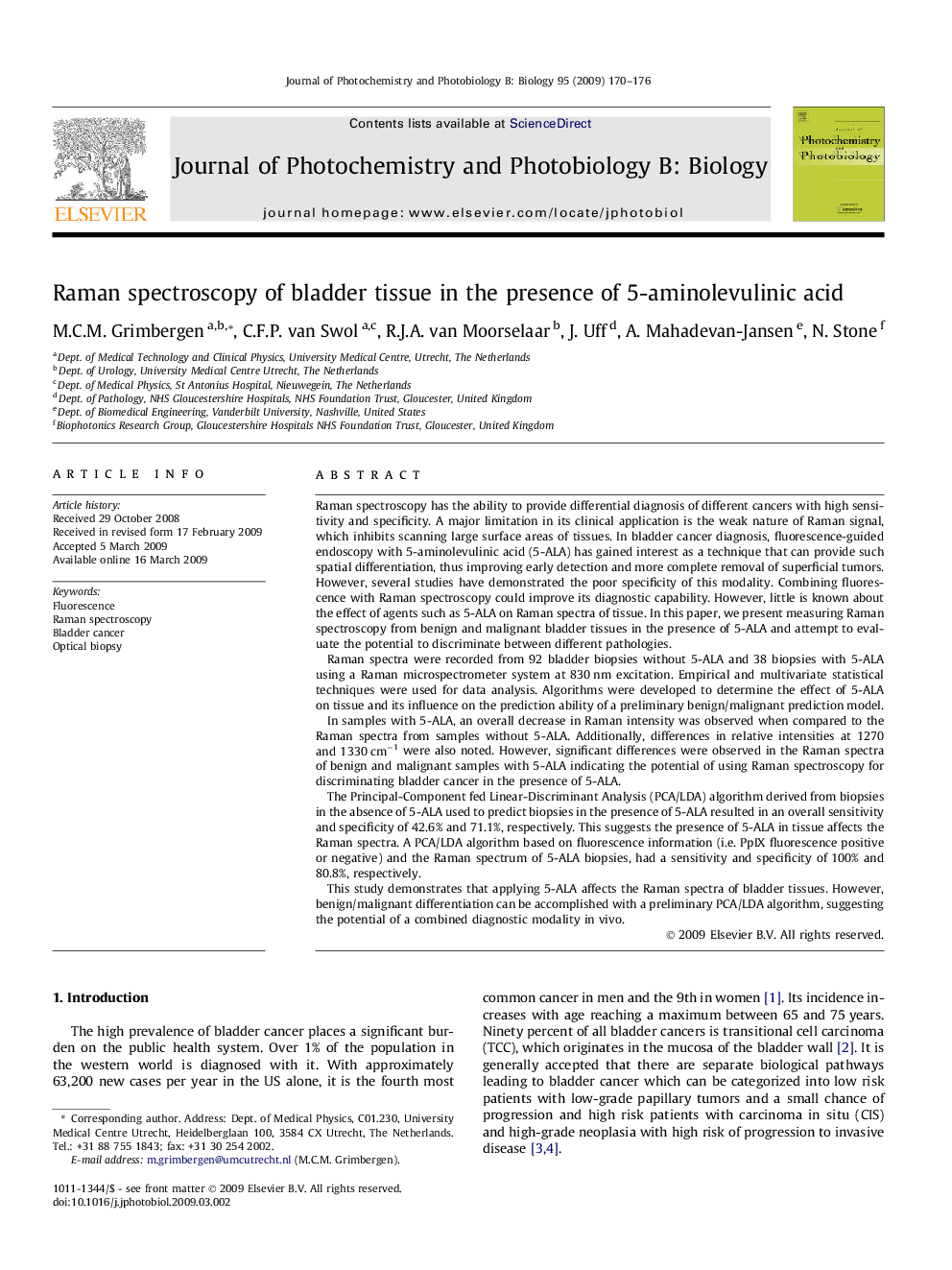| Article ID | Journal | Published Year | Pages | File Type |
|---|---|---|---|---|
| 29974 | Journal of Photochemistry and Photobiology B: Biology | 2009 | 7 Pages |
Raman spectroscopy has the ability to provide differential diagnosis of different cancers with high sensitivity and specificity. A major limitation in its clinical application is the weak nature of Raman signal, which inhibits scanning large surface areas of tissues. In bladder cancer diagnosis, fluorescence-guided endoscopy with 5-aminolevulinic acid (5-ALA) has gained interest as a technique that can provide such spatial differentiation, thus improving early detection and more complete removal of superficial tumors. However, several studies have demonstrated the poor specificity of this modality. Combining fluorescence with Raman spectroscopy could improve its diagnostic capability. However, little is known about the effect of agents such as 5-ALA on Raman spectra of tissue. In this paper, we present measuring Raman spectroscopy from benign and malignant bladder tissues in the presence of 5-ALA and attempt to evaluate the potential to discriminate between different pathologies.Raman spectra were recorded from 92 bladder biopsies without 5-ALA and 38 biopsies with 5-ALA using a Raman microspectrometer system at 830 nm excitation. Empirical and multivariate statistical techniques were used for data analysis. Algorithms were developed to determine the effect of 5-ALA on tissue and its influence on the prediction ability of a preliminary benign/malignant prediction model.In samples with 5-ALA, an overall decrease in Raman intensity was observed when compared to the Raman spectra from samples without 5-ALA. Additionally, differences in relative intensities at 1270 and 1330 cm−1 were also noted. However, significant differences were observed in the Raman spectra of benign and malignant samples with 5-ALA indicating the potential of using Raman spectroscopy for discriminating bladder cancer in the presence of 5-ALA.The Principal-Component fed Linear-Discriminant Analysis (PCA/LDA) algorithm derived from biopsies in the absence of 5-ALA used to predict biopsies in the presence of 5-ALA resulted in an overall sensitivity and specificity of 42.6% and 71.1%, respectively. This suggests the presence of 5-ALA in tissue affects the Raman spectra. A PCA/LDA algorithm based on fluorescence information (i.e. PpIX fluorescence positive or negative) and the Raman spectrum of 5-ALA biopsies, had a sensitivity and specificity of 100% and 80.8%, respectively.This study demonstrates that applying 5-ALA affects the Raman spectra of bladder tissues. However, benign/malignant differentiation can be accomplished with a preliminary PCA/LDA algorithm, suggesting the potential of a combined diagnostic modality in vivo.
